In Traditional Chinese Medicine (TCM), meridians, known as “Jing Luo,” are a big deal.
They are invisible pathways running all over our body, carrying our life force known as Qi. Think of them as the body’s energy highway.
There are 12 main meridians, and each one is paired with a specific organ. It is quite similar to the 7 Chakra system from Ayurveda and Hindu traditions.
Now, why should you care about these meridians? Well, they are essential for our well-being!
They transport the energy that nourish our body. They connect our internal organs and help them communicate with each other.
They also help balance Yin and Yang and protect our body. Any imbalances in the flow of Qi along these meridians can lead to dis-ease, as I’d like to call it.
In this article, we’ll be covering the 12 main meridians, their associated functions, and their importance in maintaining optimal health.
Table of Contents
ToggleWhat is Qi?
Before diving into the Meridians. We first must understand the concept of Qi.
Qi (pronounced “chee”, can also be spelled as Chi) is a fundamental concept that refers to the life force that circulates throughout the body.
It is often described as the force that animates and protects the body.
Qi encompasses both physical and non-physical aspects of the body, influencing functions such as movement, warmth, and the function of internal organs.
Qi plays several key roles in the body:
-
Promotes Function: Qi helps in the functioning of organs, tissues, and cells. It enables us to move, think, and feel.
-
Warms the Body: Qi helps to regulate body temperature and keep us warm.
-
Defends Against Pathogens: Qi acts as a protective shield against external pathogens, preventing illness.
-
Transforms and Transports: Qi helps in the transformation of food into nutrients and the transportation of nutrients and waste products throughout the body.
The meridians are the pathways through which Qi and blood circulate throughout the body.
When Qi flows freely through the meridians, the body is in a state of balance and health. However, when there is an imbalance of Qi, it can lead to illness.
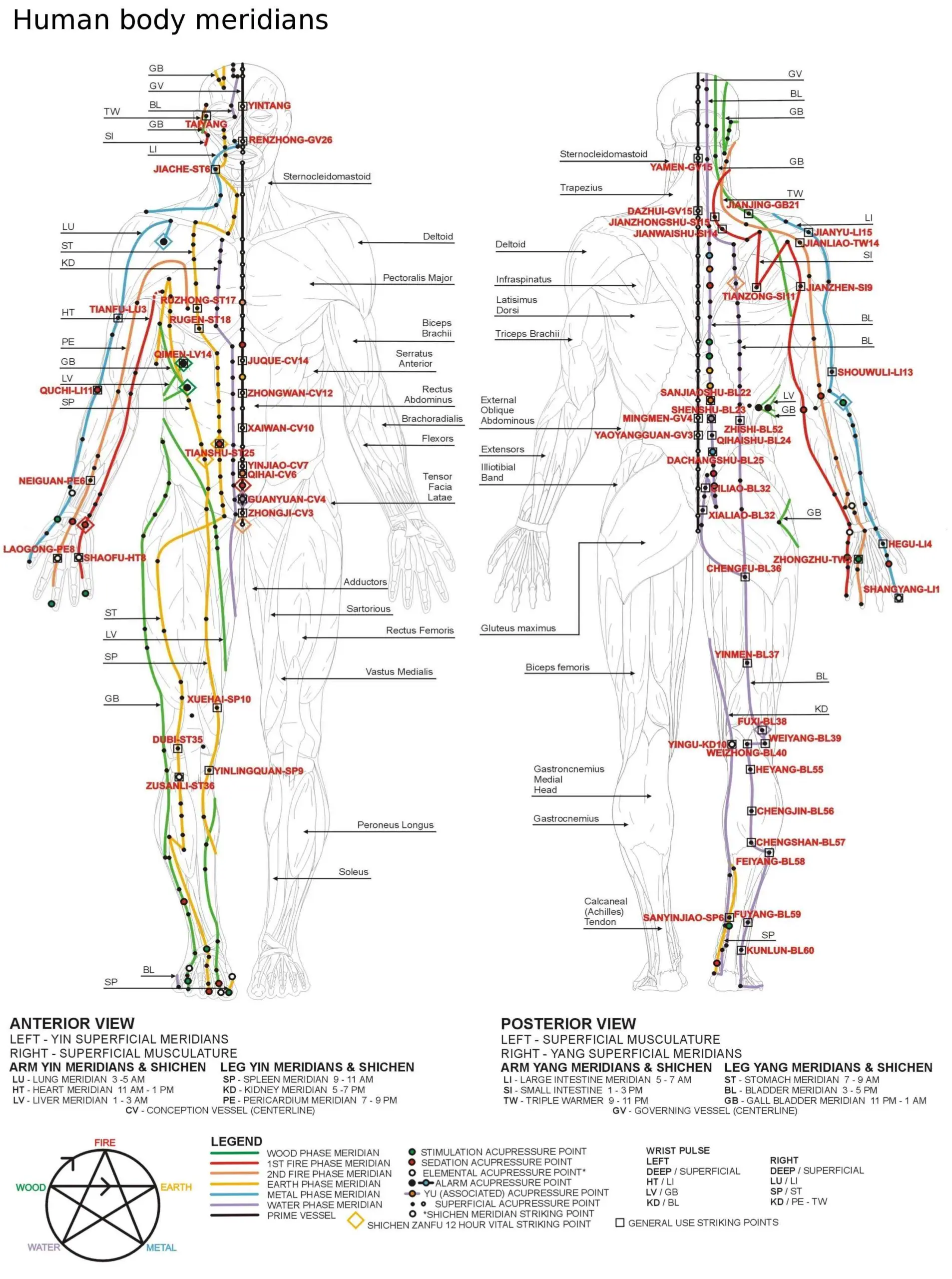
What are Meridians?
Meridians are pathways in the body through which vital energy, known as Qi flows. They form a complex network of channels connecting various parts of the body, including organs, tissues, and cells.
The concept of meridians is central to acupuncture, acupressure, and many other TCM practices.
There are 12 main meridians that correspond to specific organs, such as the lung, heart, stomach, and liver. Each meridian has its own set of pathways and points along the body.
Qi is believed to continuously circulate through the meridians, with each meridian having a peak time during a 24-hour period.
By stimulating specific points along the meridians, known as acupuncture or acupressure points, practitioners aim to correct imbalances and restore the free flow of Qi.
Some studies have even shown correlations between traditional acupuncture points and certain physiological processes.
What are the 12 Meridians?
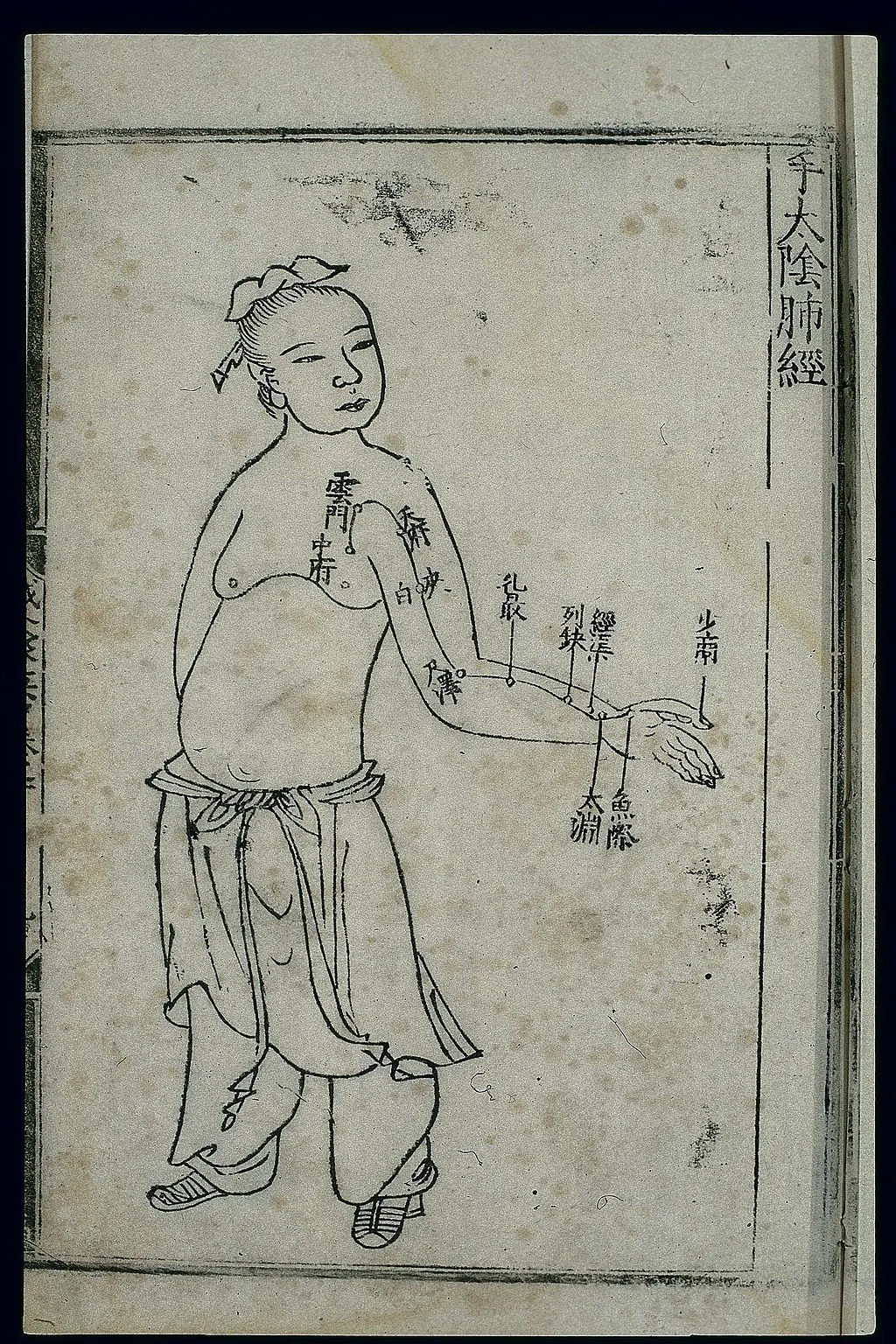
1. Lung Meridian
The Lung Meridian is a Yin meridian. The lungs in TCM are considered the “master of Qi,” and play a crucial role in the circulation of Qi and blood throughout the body. The Lung Meridian governs the respiratory system and skin, and is also associated with feelings of grief.
Location: The Lung Meridian starts from the middle section of the thumb, runs along the radial side of the arm, passes through the shoulder, and ends at the chest, connecting with the Large Intestine Meridian.
Qi Flow Direction: The Qi in the Lung Meridian flows from the thumb up to the chest.
Acupuncture Points:
- LU 1 (Zhongfu): Located on the chest, just below the collarbone. It is used to treat respiratory issues like cough, asthma, and chest pain.
- LU 7 (Lieque): Located on the wrist, just above the base of the thumb. It is used to treat headaches, neck pain, and colds.
- LU 9 (Taiyuan): Located on the wrist, at the base of the thumb. It is used to treat cough, asthma, and palpitations.
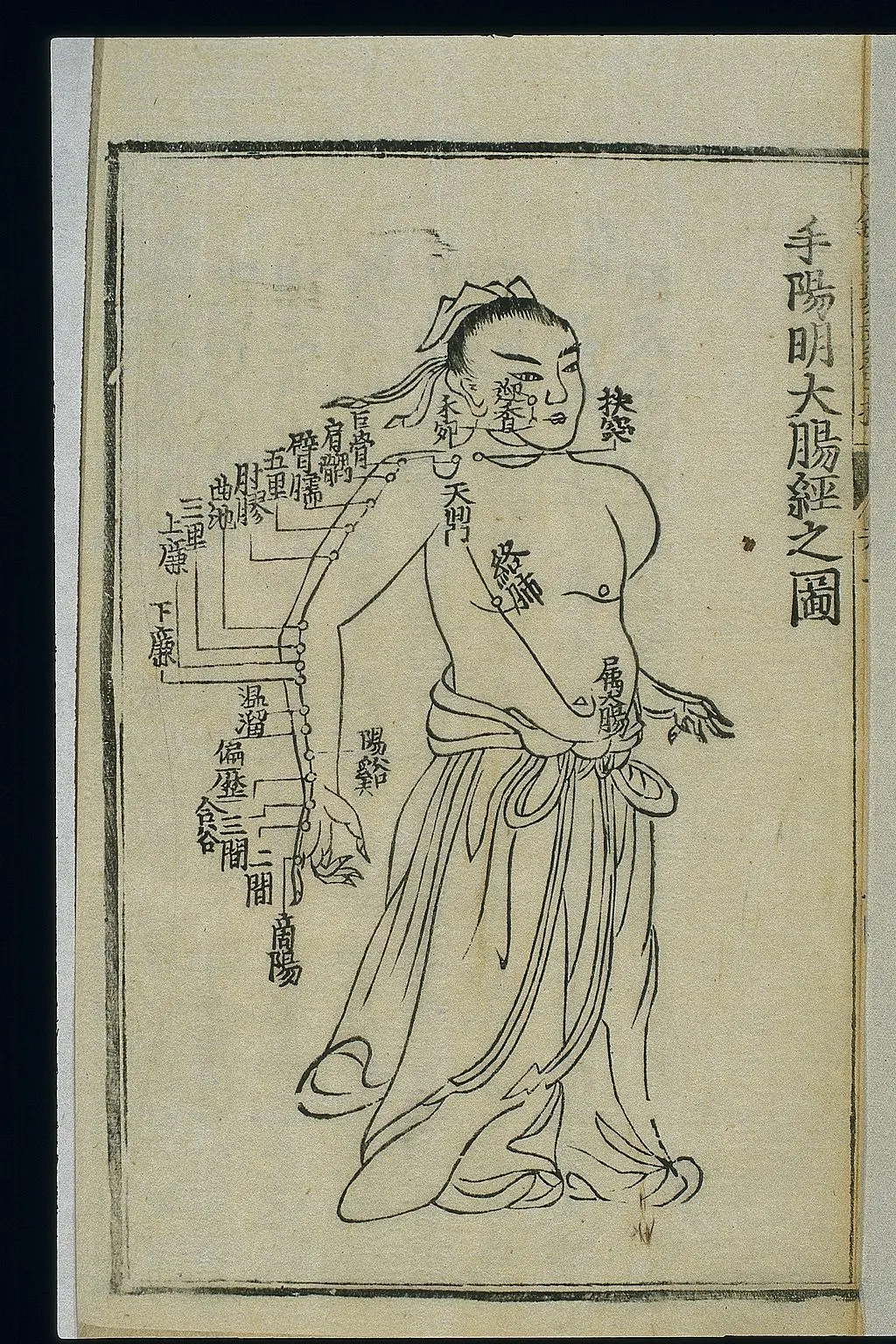
2. Large Intestine Meridian
The Large Intestine Meridian is a Yang meridian and is paired with the Lung meridian (Yin and Yang, remember?) The Large Intestine Meridian is associated with the elimination of waste from the body, both physically and emotionally. It plays a crucial role in maintaining the balance of fluids in the body and is also associated with the skin. The health of the Large Intestine Meridian is reflected in the skin’s appearance and the regularity of bowel movements.
Location: The Large Intestine Meridian starts from the tip of the index finger, runs along the radial side of the arm, passes through the shoulder, and ends at the nose, connecting with the Stomach Meridian.
Qi Flow Direction: The Qi in the Large Intestine Meridian flows from the index finger up to the nose.
Acupuncture Points:
- LI 4 (Hegu): Located on the hand, between the thumb and index finger. It is used to treat headaches, pain, and induce labor.
- LI 11 (Quchi): Located on the elbow, at the end of the elbow crease. It is used to treat fevers, sore throat, and immune system disorders.
- LI 20 (Yingxiang): Located on the face, on either side of the nostrils. It is used to treat nasal congestion, sinusitis, and facial paralysis.
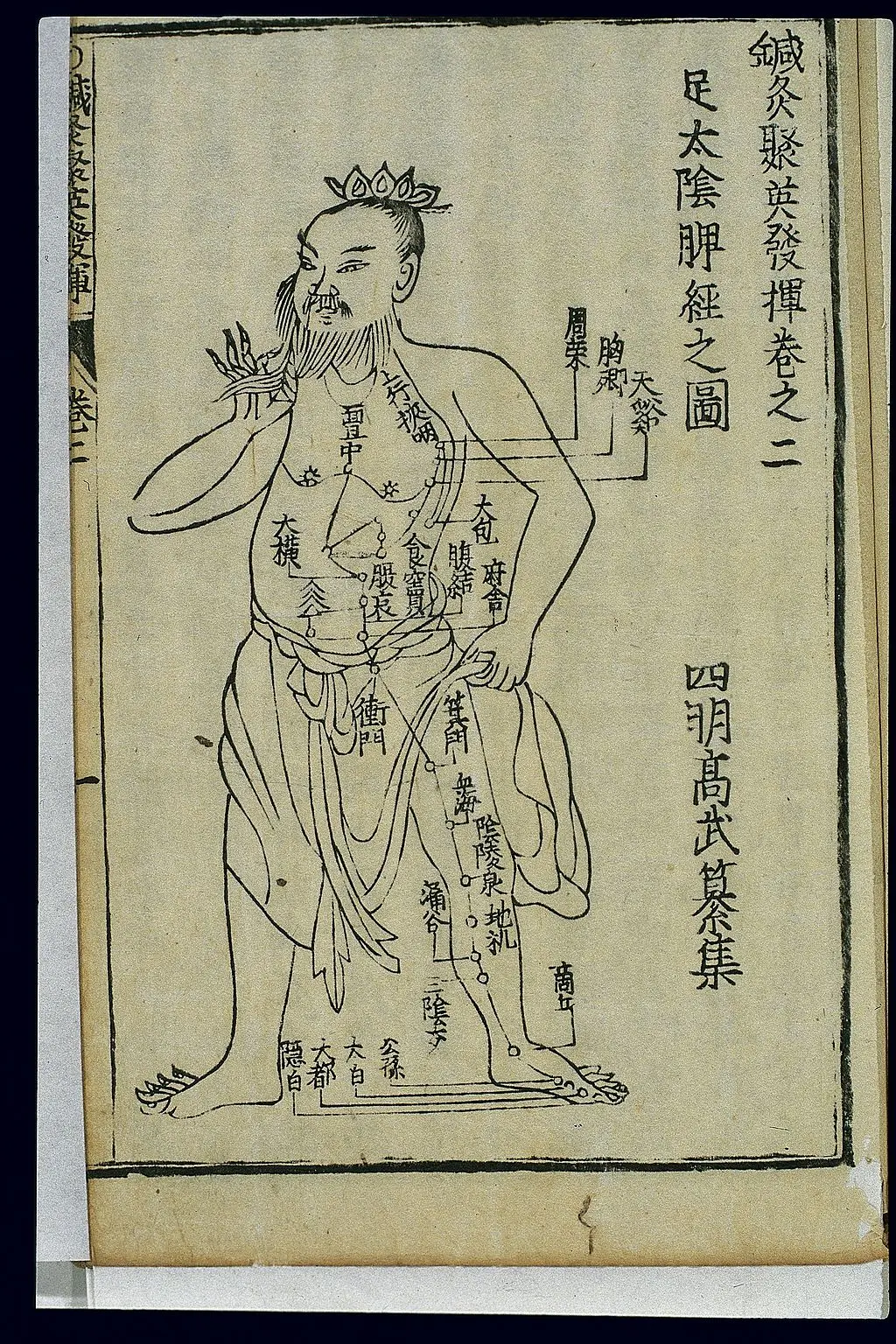
3. Spleen Meridian
The Spleen Meridian (Yin) has an influence that extends far beyond that of the western anatomical spleen. It is responsible for the transportation of food and fluids in the body and is also associated with the muscles and limbs, influencing their tone and condition.
Location: The Spleen Meridian begins at the big toe, runs along the medial side of the foot and leg, passes along the abdomen, and ends at the root of the tongue.
Qi Flow Direction: The Qi in the Spleen Meridian flows from the foot up to the chest.
Acupuncture Points:
- SP 3 (Taibai): Located on the foot, in the hollow on the medial side of the big toe. It is used to treat digestive issues like nausea, vomiting, and diarrhea.
- SP 6 (Sanyinjiao): Located on the leg, four finger widths above the inner ankle bone. It is used to treat menstrual issues, insomnia, and anxiety.
- SP 9 (Yinlingquan): Located on the leg, in the depression below the kneecap. It is used to treat edema, abdominal pain, and urinary issues.
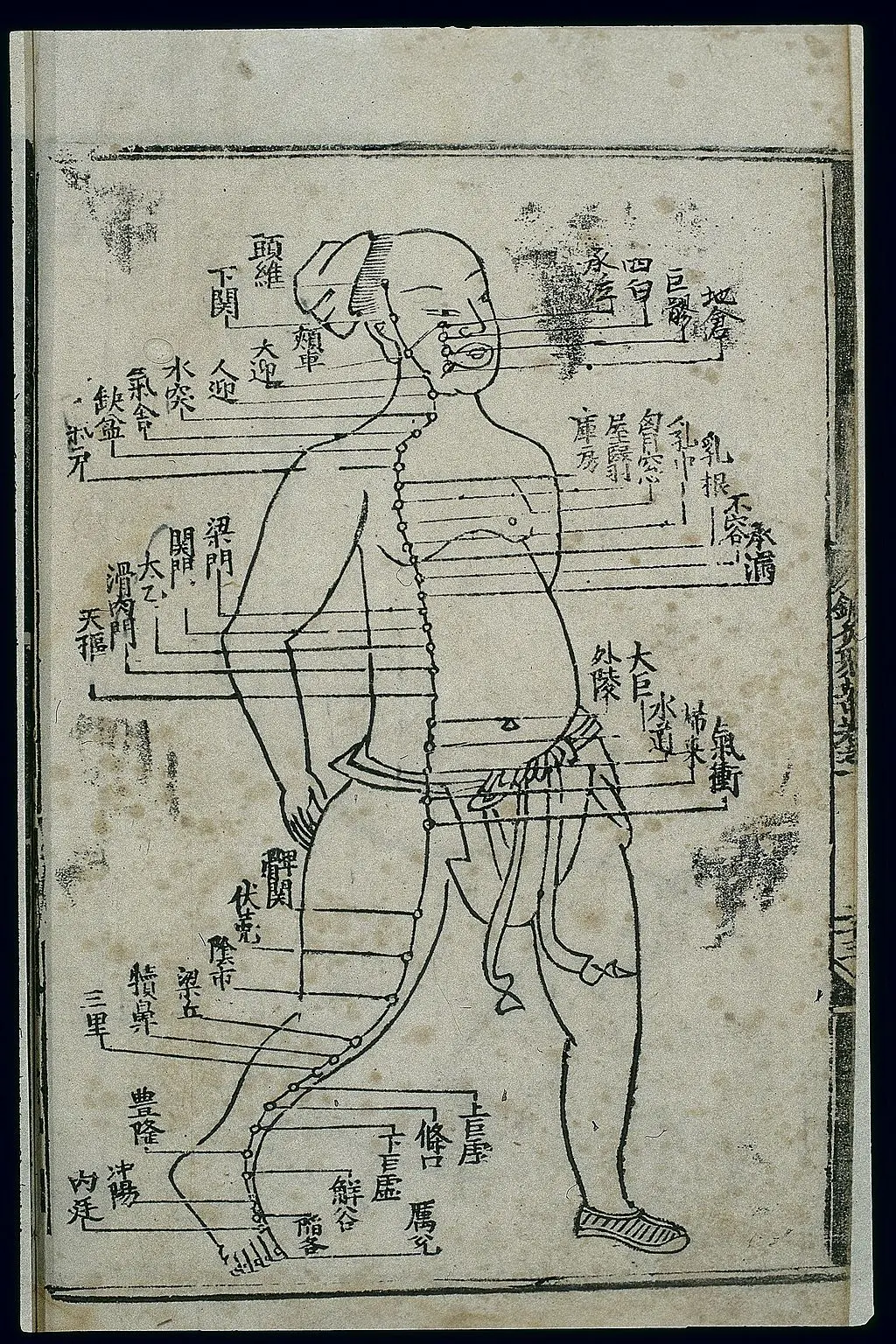
4. Stomach Meridian
The Stomach Meridian is a Yang meridian, paired with the Spleen Meridian. This pathway is integral to the digestive process, transforming food into energy and nutrients. But it’s more than just physical; it also impacts our mental and emotional well-being, particularly influencing overthinking.
Location: Beginning at the lower eyelid, it descends down the face, neck, chest, and abdomen, terminating at the second toe.
Qi Flow Direction: The Qi flows downward from the face to the second toe.
Acupuncture Points:
- ST 1 (Chengqi): Positioned directly below the pupil, between the eyeball and the infraorbital ridge. It is commonly used for eye disorders such as redness, swelling, and pain.
- ST 36 (Zusanli): Located four finger widths below the kneecap, one finger width outside of the shinbone. A multifunctional point, it is used for gastrointestinal discomfort, fatigue, and immune support.
- ST 44 (Neiting): Situated between the second and third toes. It is employed for tooth pain, jaw swelling, and sore throat.
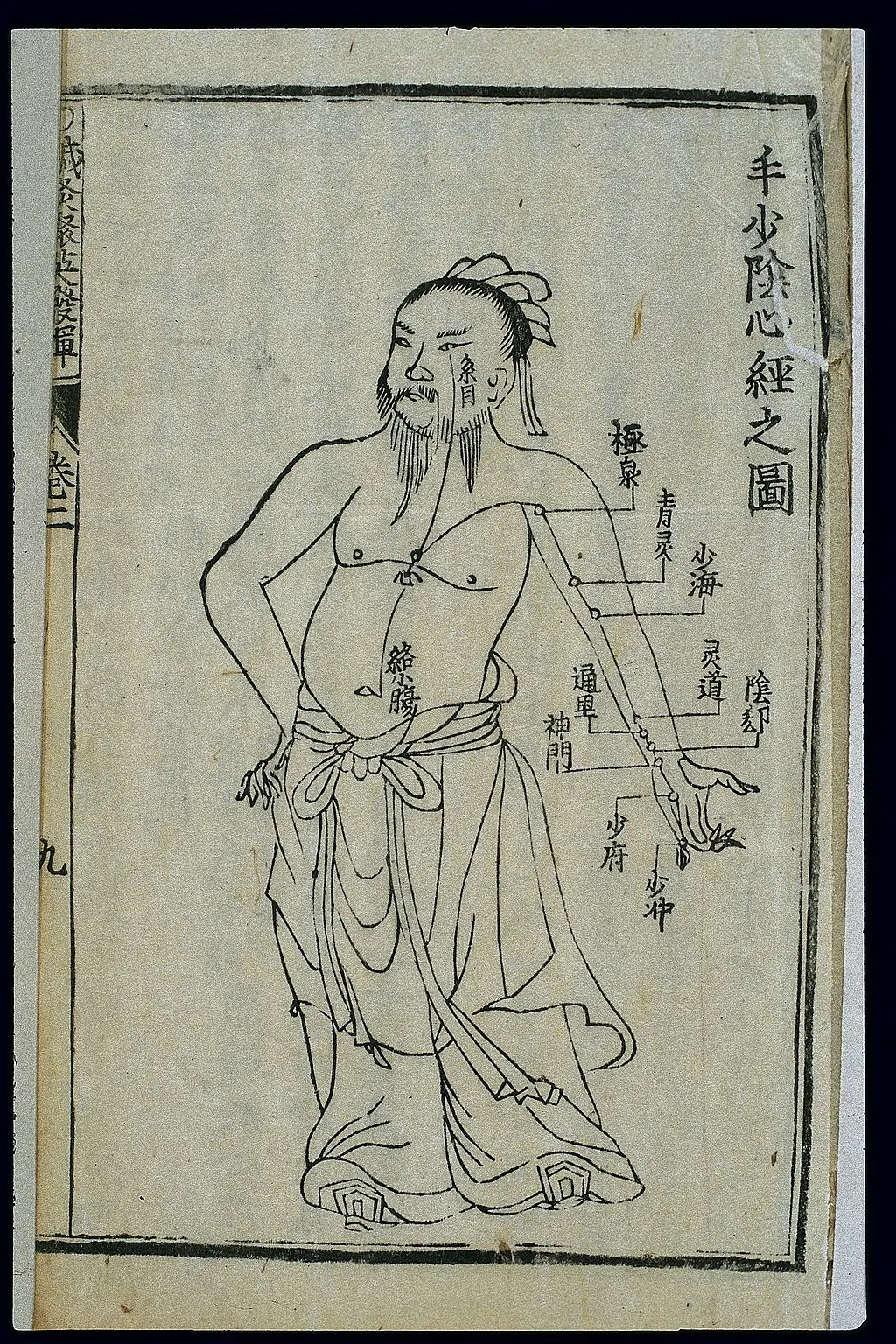
5. Heart Meridian
The Heart Meridian, as the name suggests, is linked to the heart organ, but its functions in TCM go beyond the Western understanding of the heart. It is a Yin meridian and is responsible for governing the blood and housing the mind, which includes our consciousness, emotions, and mental activities.
-
Location: The Heart Meridian starts from the heart, passes through the diaphragm to connect with the small intestine, then runs along the inner side of the arm, ending at the tip of the little finger.
-
Qi Flow Direction: The Qi in the Heart Meridian flows from the chest down to the little finger.
-
Acupuncture Points:
- HT 3 (Shaohai): Located on the inner side of the elbow. It is used to treat pain in the chest, heart palpitations, and emotional distress.
- HT 7 (Shenmen): Located on the wrist, at the base of the little finger. It is used to treat insomnia, anxiety, and heart palpitations.
- HT 9 (Shaochong): Located at the tip of the little finger. It is used to treat chest pain, heart palpitations, and fainting.
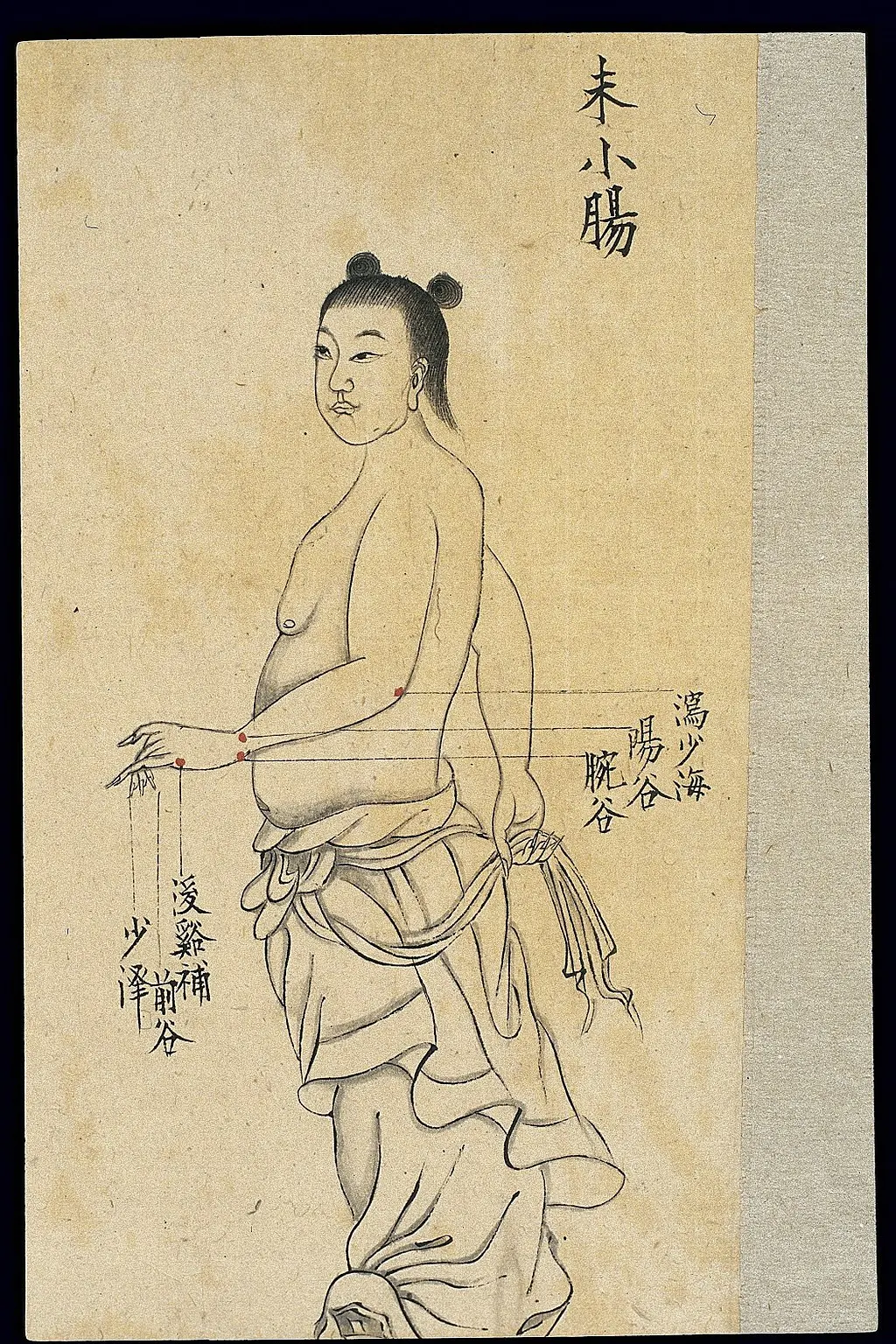
6. Small Intestine Meridian
The Small Intestine Meridian (Yang) is paired with the heart. It’s responsible for receiving partially digested food from the stomach and further digesting it, separating the pure from the impure, and then distributing the pure nutrients throughout the body and eliminating the waste.
Location: The Small Intestine Meridian starts at the little finger and runs along the ulnar side of the arm, passes over the shoulder blade, and ends in front of the ear, connecting with the Bladder Meridian.
Qi Flow Direction: The Qi in the Small Intestine Meridian flows from the little finger up to the face.
Acupuncture Points:
- SI 3 (Houxi): Located on the hand, in the depression at the base of the little finger. It is used to treat neck pain, low back pain, and headaches.
- SI 6 (Yanglao): Located on the forearm, on the ulnar side, in a depression between the ulna and radius. It is used to treat shoulder and neck pain, headaches, and deafness.
- SI 19 (Tinggong): Located in front of the ear, in the depression between the jawbone and the skull. It is used to treat tinnitus, earache, and TMJ pain.
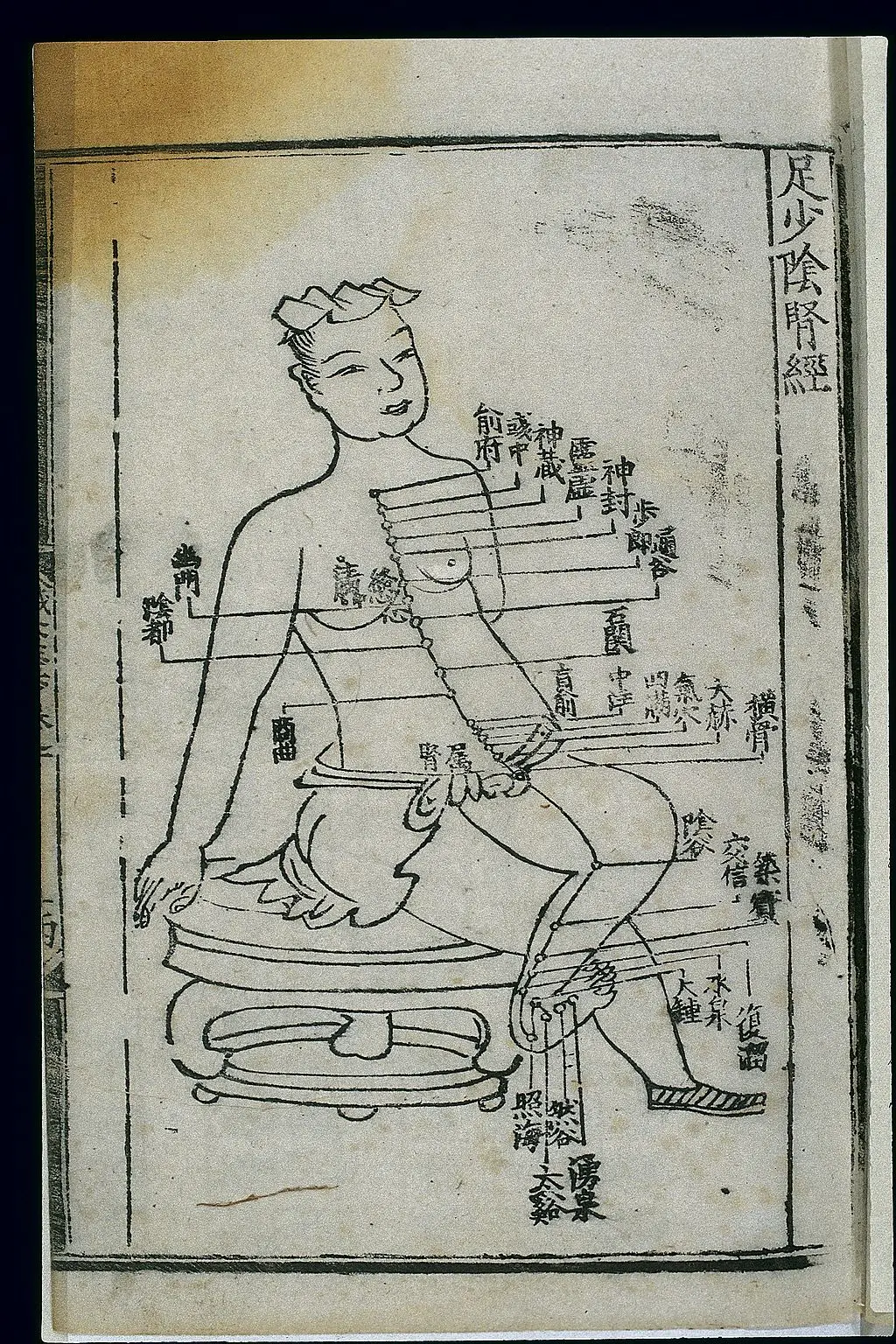
7. Kidney Meridian
The Kidney Meridian is a yin meridian. The kidneys are considered the root of life and store the body’s essential energy, also known as Jing (one of the Three Treasures in Taoism). The Kidney Meridian plays a crucial role in regulating the body’s water metabolism, reproduction system, and growth and development.
Location: The Kidney Meridian starts from the sole of the foot, runs along the medial side of the leg, passes through the abdomen, and ends at the root of the tongue.
Qi Flow Direction: The Qi in the Kidney Meridian flows from the foot up to the chest.
Acupuncture Points:
- KI 1 (Yongquan): Located on the sole of the foot, in the depression that appears when the toes are curled. It is used to treat insomnia, palpitations, and anxiety.
- KI 3 (Taixi): Located on the ankle, in the depression between the ankle bone and the Achilles tendon. It is used to treat lower back pain, tinnitus, and insomnia.
- KI 7 (Fuliu): Located on the leg, approximately 2 inches above KI 3. It is used to treat edema, night sweats, and dry mouth.
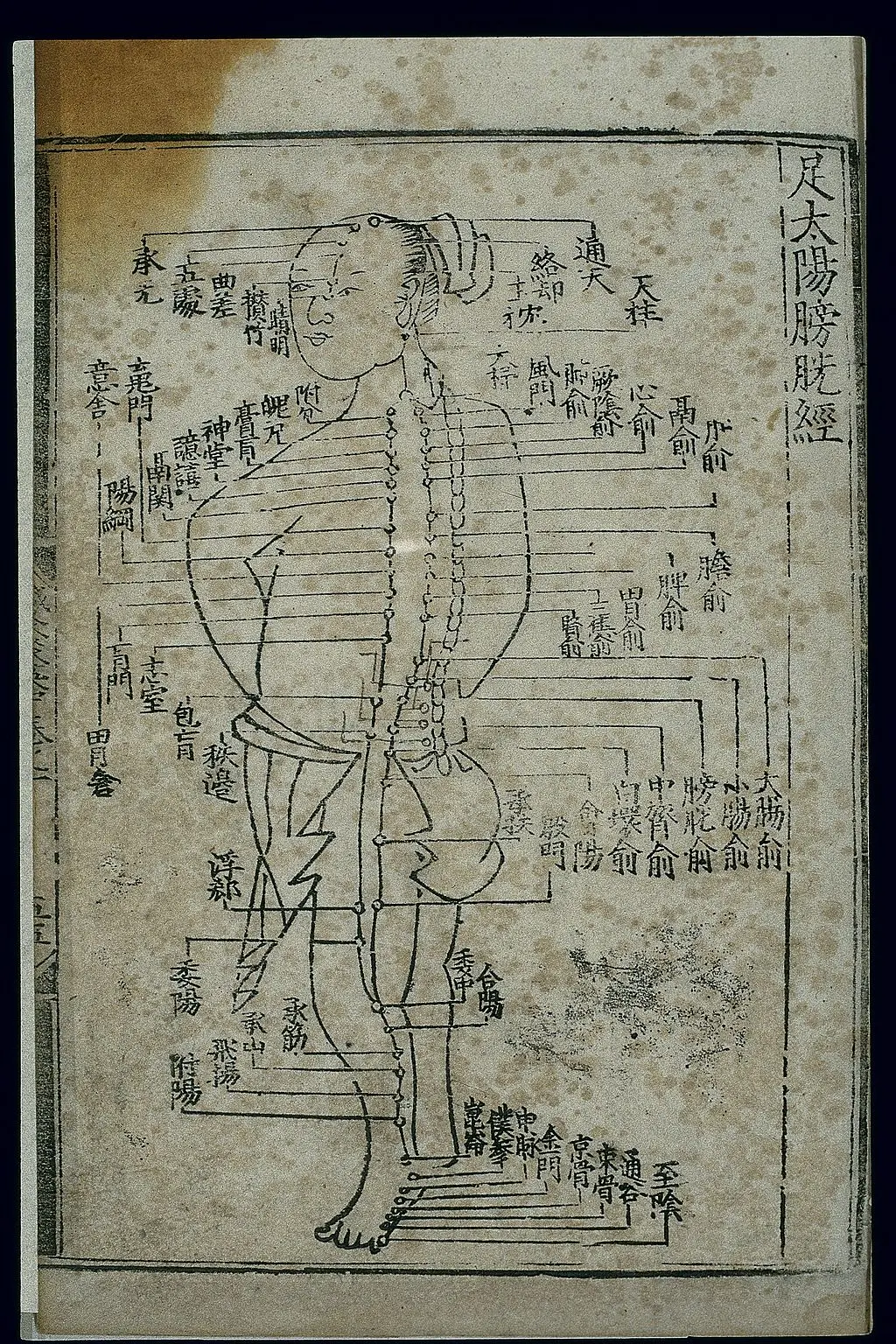
8. Bladder Meridian
The Bladder Meridian is one of the yang meridians and is paired with the Kidney Meridian. This pathway is the longest and most complex meridian. It not only treats the urinary bladder but is also effective for the entire surface of the back and the back of the head and neck. The Bladder Meridian influences the functions of the urinary bladder, controls the “Sea of Qi,” and plays a significant role in balancing the autonomic nervous system.
Location: The Bladder Meridian starts at the inner corner of the eye, runs over the head, down the neck and the back, along the hamstring, and ends at the little toe.
Qi Flow Direction: The Qi in the Bladder Meridian flows from the eye down to the toe.
Acupuncture Points:
- BL 1 (Jingming): Located on the inner corner of the eye. It is used to treat eye disorders, headache, and nasal congestion.
- BL 40 (Weizhong): Located at the back of the knee. It is used to treat lower back pain, hip pain, and knee pain.
- BL 60 (Kunlun): Located between the Achilles tendon and the ankle bone. It is used to treat headache, neck pain, and ankle pain.
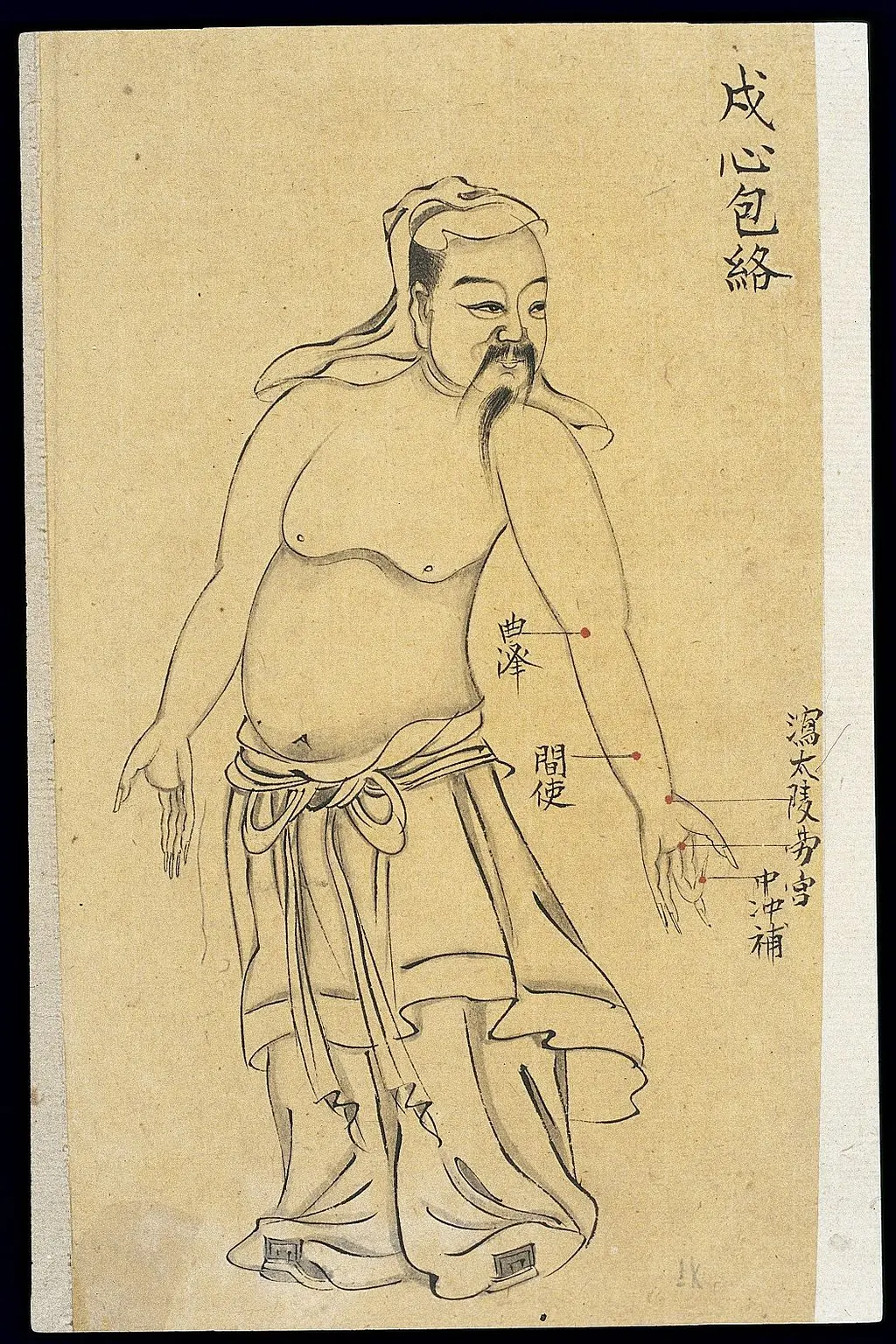
9. Pericardium Meridian
The Pericardium Meridian, also known as the Circulation-Sex Meridian, is a yin meridian. The pericardium is considered the “heart’s protector”, as it provides a protective layer around the heart and regulates its function.
Location: The Pericardium Meridian starts in the chest, runs down the medial side of the arm, and ends at the tip of the middle finger.
Qi Flow Direction: The Qi in the Pericardium Meridian flows from the chest down to the fingers.
Acupuncture Points:
- PC 6 (Neiguan): Located on the forearm, two and a half finger widths from the wrist crease, between the tendons of the palmaris longus and flexor carpi radialis muscles. It is used to treat nausea, palpitations, and insomnia.
- PC 7 (Daling): Located in the middle of the wrist crease. It is used to treat chest pain, palpitations, and emotional issues.
- PC 8 (Laogong): Located in the center of the palm. It is used to treat excessive sweating, mouth ulcers, and heartburn.
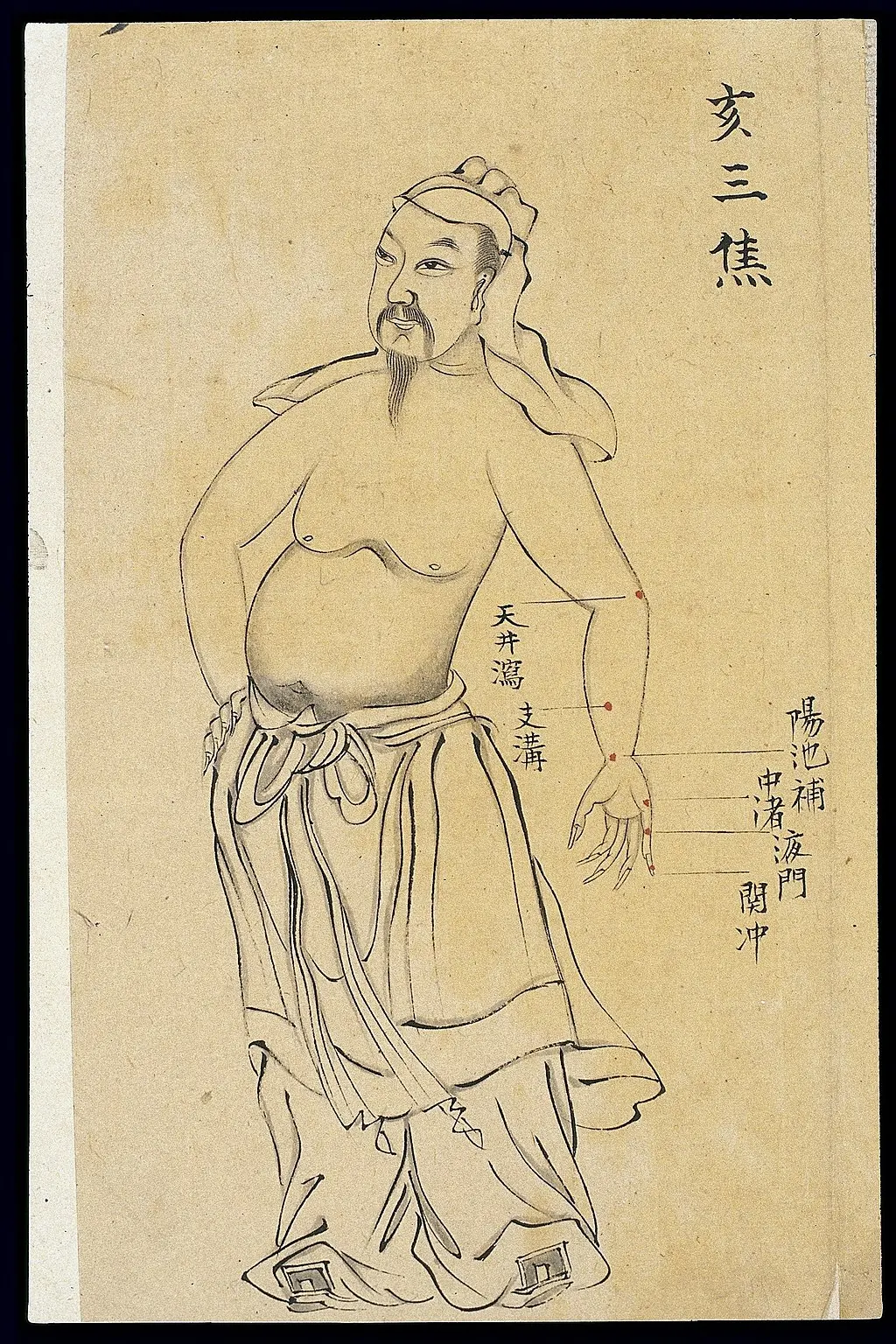
10. Triple Burner Meridian
The Triple Burner Meridian, also known as the San Jiao or Triple Warmer Meridian, is a yang meridian and is paired with the Pericardium Meridian. The Triple Burner is a unique organ in TCM as it does not have a physical form. Instead, it refers to the functional divisions of the body’s activities and is responsible for the regulation of body temperature and the flow of fluids in the body.
Location: The Triple Burner Meridian starts at the ring finger, runs along the dorsum of the hand and arm, passes through the shoulder and neck, and ends at the ear and the corner of the forehead.
Qi Flow Direction: The Qi in the Triple Burner Meridian flows from the fingers up to the head.
Acupuncture Points:
- TB 5 (Waiguan): Located two finger widths above the wrist crease, between the ulna and radius bones. It is used to treat headaches, earaches, and pain in the shoulder and arm.
- TB 6 (Zhigou): Located three finger widths above the wrist crease, between the ulna and radius bones. It is used to treat constipation, insomnia, and ear problems.
- TB 17 (Yifeng): Located behind the earlobe, in the depression between the jaw and the mastoid process. It is used to treat ear problems, tinnitus, and facial paralysis.
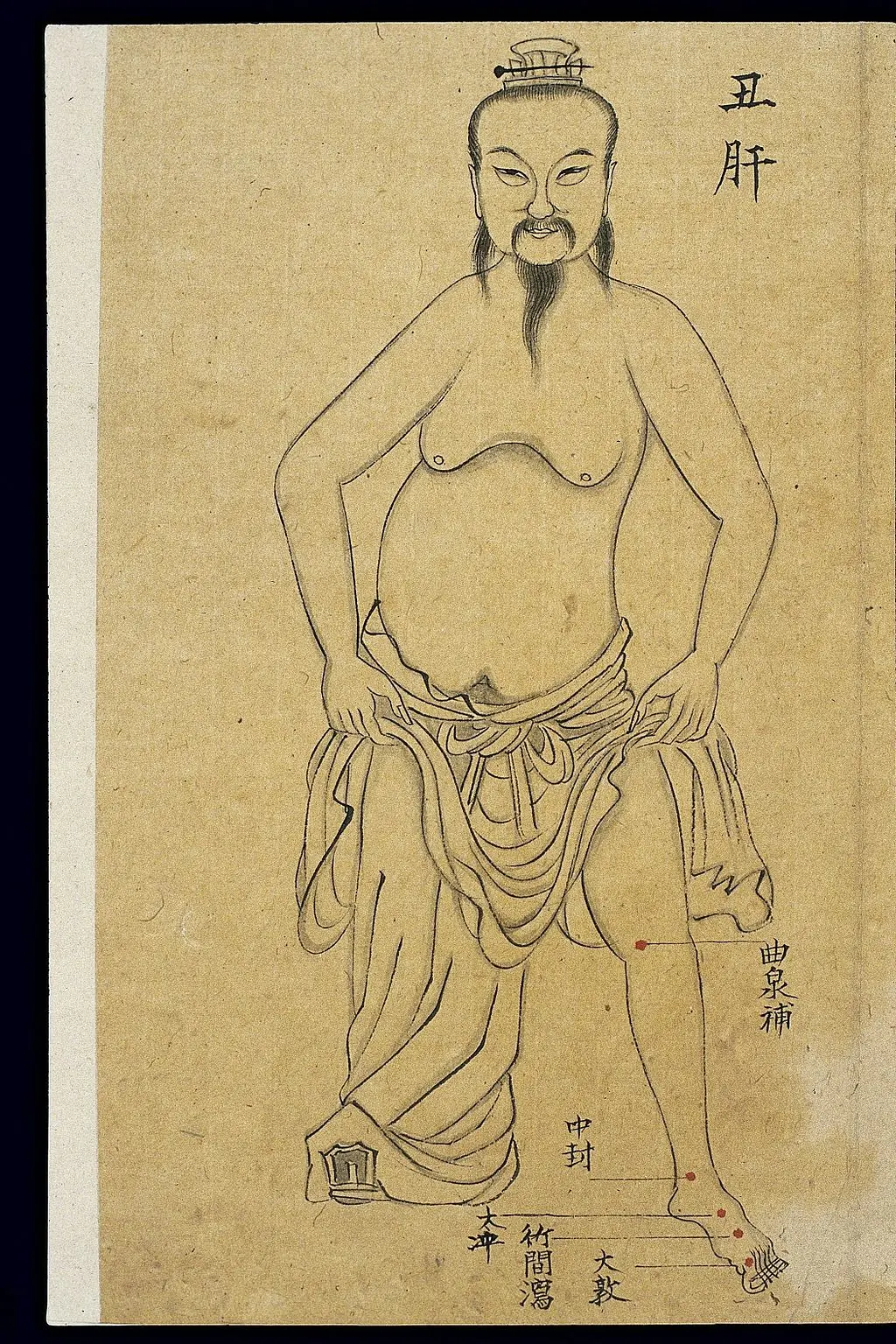
11. Liver Meridian
The Liver Meridian is a Yin meridian and it is associated with the emotions of anger. The liver in TCM is considered the “General” of the body, as it is responsible for coordination. It also stores and purifies blood and is involved in the regulation of menstruation.
Location: The Liver Meridian starts from the big toe, runs along the medial side of the leg and thigh, enters the torso, and ends at the chest.
Qi Flow Direction: The Qi in the Liver Meridian flows from the foot up to the chest.
Acupuncture Points:
- LV 3 (Taichong): Located on the foot, between the first and second toes. It is used to treat stress, anxiety, and menstrual pain.
- LV 8 (Ququan): Located on the leg, in the depression between the medial condyle of the femur and the medial condyle of the tibia. It is used to treat knee pain, impotence, and menstrual issues.
- LV 14 (Qimen): Located on the chest, below the nipple. It is used to treat chest pain, acid reflux, and emotional issues.
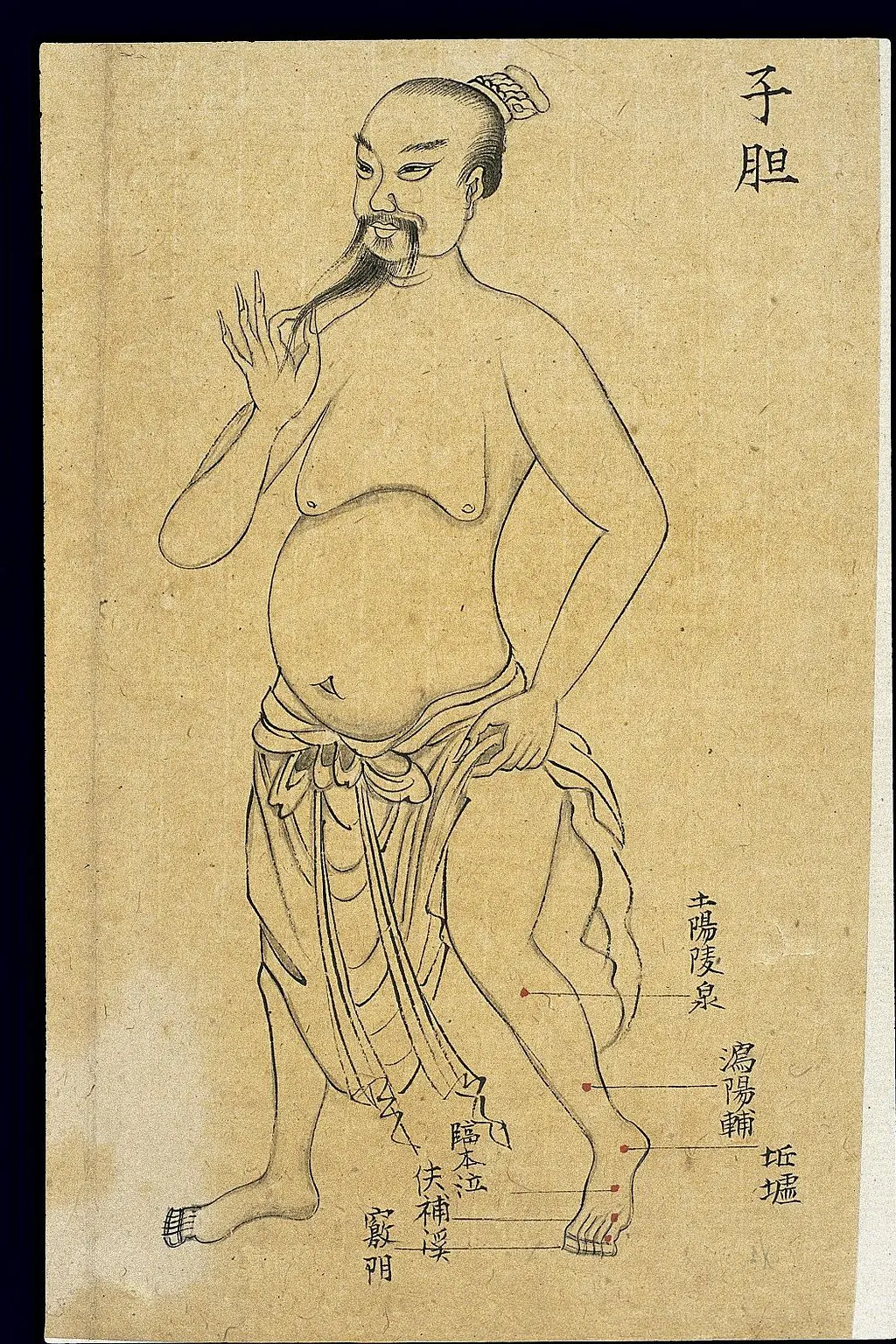
12. Gallbladder Meridian
Finally, the Gallbladder Meridian is unique among the meridians as it is the only Yang meridian that does not connect directly with the exterior of the body. And you guessed it, it’s paired with the Liver Meridian. This meridian is associated with decision making, courage, and initiative, and is crucial for the body’s movement and coordination. It regulates the storage and excretion of bile, which is essential for digestion.
Location: The Gallbladder Meridian begins at the outer corner of the eye, runs along the side of the head, down the neck, torso, and hips, along the outside of the leg, and ends at the fourth toe.
Qi Flow Direction: The Qi in the Gallbladder Meridian flows from the head down to the toe.
Acupuncture Points:
- GB 20 (Fengchi): Located at the base of the skull, in the depression between the sternocleidomastoid and trapezius muscles. It is used to treat headaches, neck pain, and dizziness.
- GB 30 (Huantiao): Located at the junction of the buttocks and the thigh. It is used to treat hip pain, sciatica, and lower back pain.
- GB 34 (Yanglingquan): Located on the leg, in the depression anterior and inferior to the head of the fibula. It is used to treat muscle cramps, knee pain, and jaundice.
What is the Meridian Clock?
The Meridian Clock, also known as the Chinese Body Clock, is a tool used to understand the flow of Qi throughout the 12 meridians in the body.
Qi is believed to circulate throughout the body along 12 main meridians. According to TCM, each meridian has a two-hour period of the day when it is most active, and Qi is at its peak in that particular meridian.
During this time, the corresponding organ is also at its peak functioning. This cycle repeats every 24 hours.
For example, the Lung Meridian is most active between 3-5 am. This is when the lungs are said to be working at their optimal capacity, replenishing the body with fresh oxygen.
Conversely, it is also the time when lung-related issues, such as asthma or cough, may be exacerbated.
How to Balance the Meridians
Balanced meridians are so important for maintaining our body’s overall well-being. When the meridians are balanced, it means that Qi flows smoothly, ensuring that all organs receive adequate nourishment. This helps maintain optimal function of the systems in the body, which in turn supports overall health.
Imbalances in the meridians can lead to a variety of health issues. When the flow of Qi (or blood) is obstructed, it can result in pain, inflammation, and dysfunction in the affected area.
For example, an imbalance in the Liver Meridian can lead to liver dysfunction, which may manifest as anger and headaches.
Yes, you read that right. Imbalances in the meridians can also affect the mind and emotions. TCM believes that the mind and body are connected, and imbalances in the body can lead to emotional disturbances and vice versa.
For instance, the Heart Meridian is associated with emotions such as joy, and an imbalance in this meridian can lead to anxiety and even insomnia!
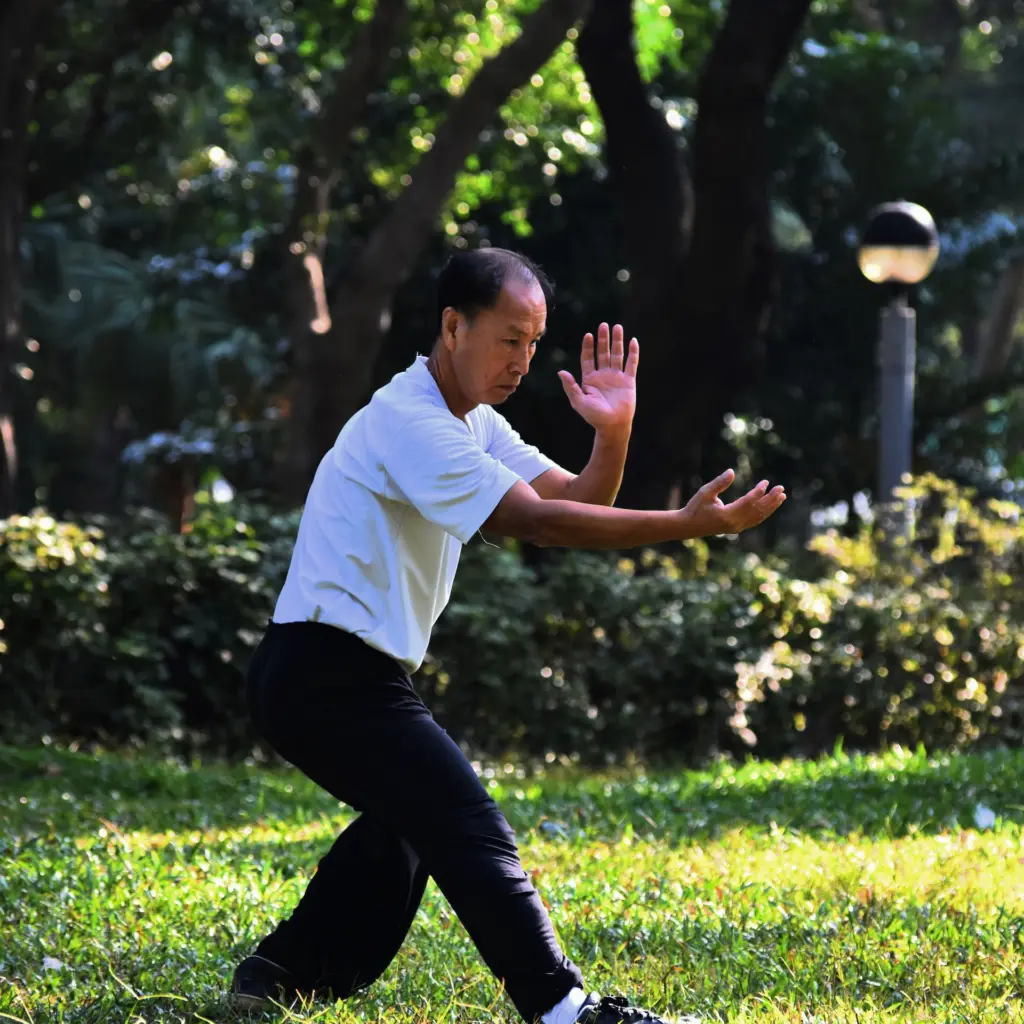
Techniques for Balancing Meridians
Acupuncture: Acupuncture involves the insertion of thin needles into specific acupuncture points along the meridians to help restore the flow of Qi. It is one of the most well-known and widely used techniques for balancing the meridians.
Acupressure: Similar to acupuncture, but instead of needles, pressure is applied to the acupuncture points using fingers, hands, or a special device. It is a non-invasive technique that can be done by yourself and is helpful in relieving pain and tension.
Moxibustion: This involves burning a herb called mugwort near the surface of the skin at specific acupuncture points. The heat generated by the burning herb helps to warm the meridians and promote the flow of Qi.
Qigong and Tai Chi: Qi Gong and Tai Chi are ancient Chinese practices that involve coordinated movements, breathing exercises, and meditation to help balance the Qi. Think of them as a combination of Yoga and Reiki!
Dietary Recommendations: Food is considered as medicine and dietary habits help in maintaining the balance of the meridians. A balanced diet that includes a variety of foods that correspond to the five elements (wood, fire, earth, metal, and water) can help in that regard. For example, sour foods are associated with the Liver Meridian and they can help balance excess Qi in this meridian.


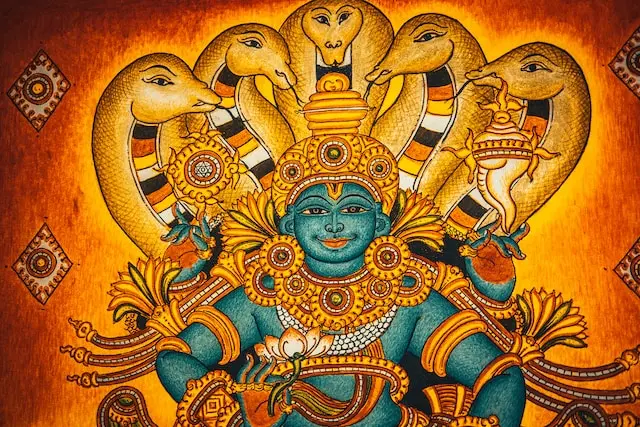
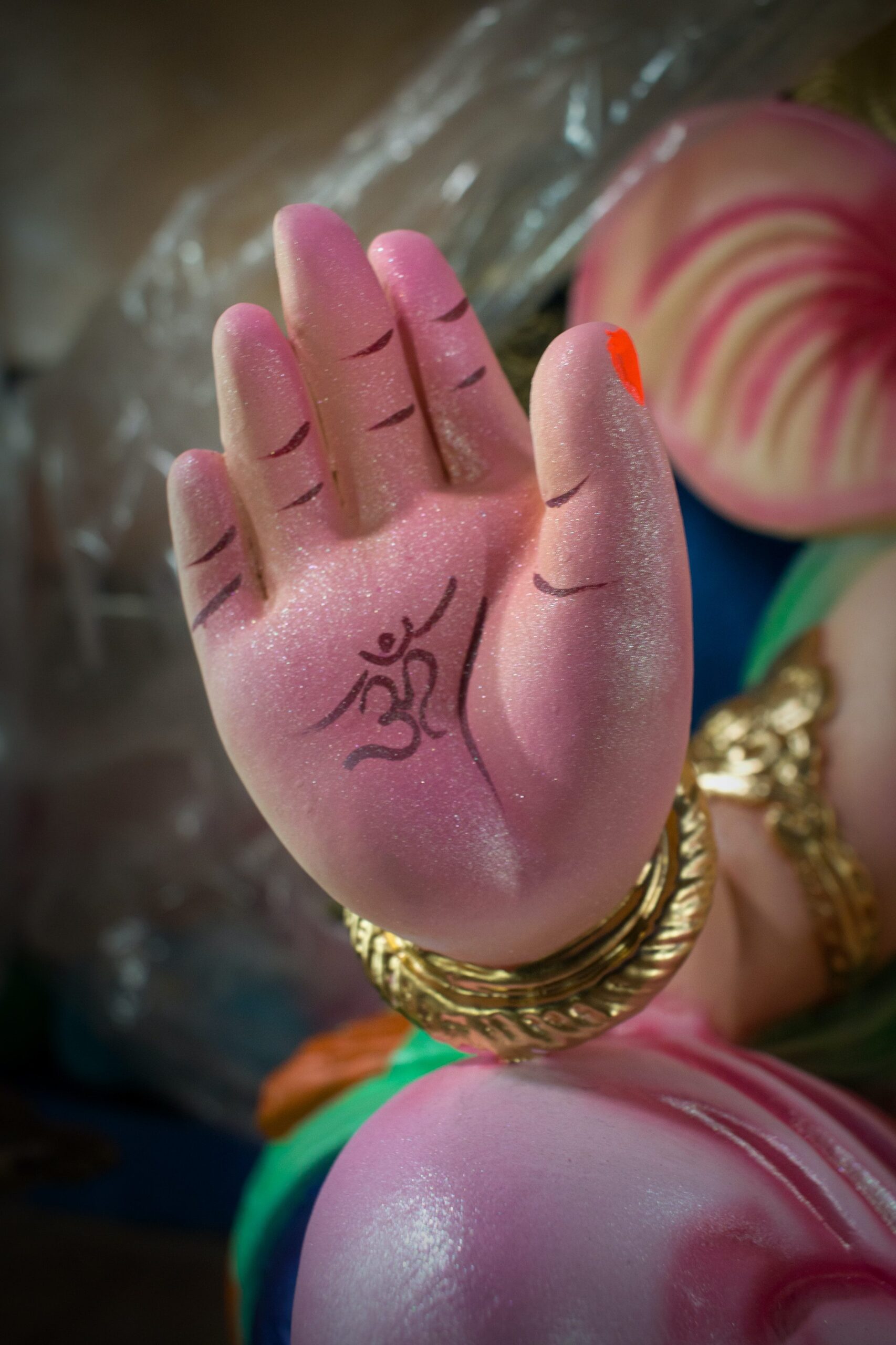






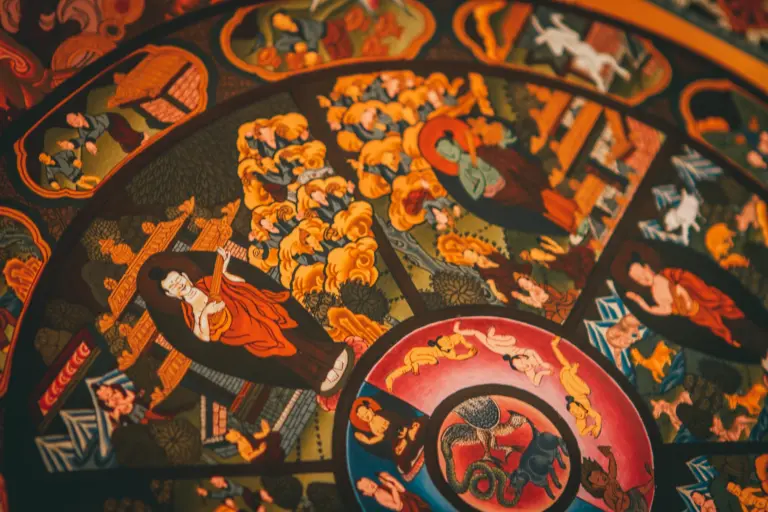
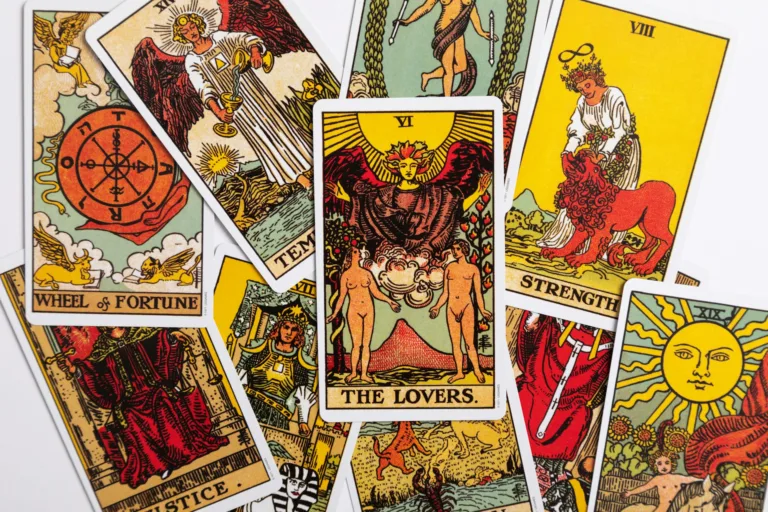
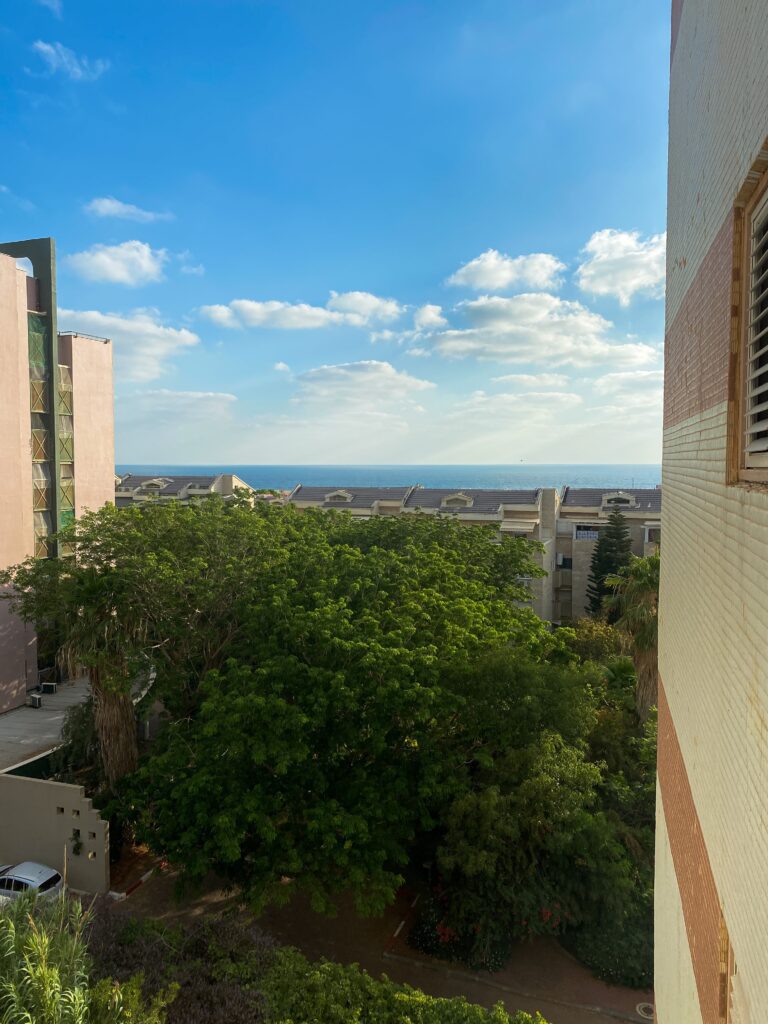

2 Responses
As a Western European citizen and foodconsultant, I’ve learned that the bitter taste in vegetables and herbs, is beneficial for the liver.
Dandelion root and tinctures made of all parts of this plant, are common in use, by herbalists. In Ireland, Britain, and The Netherlands.
Maybe the bitter is a yang quality, and the sour a yin quality? To me, sour has an awakening jolly effect, while bitter is grounding and stern to me.
Hi M.B.,
Thank you very much for your comment! The bitter taste is indeed often associated with benefits for the liver and digestion in various traditional medicine systems. Dandelion is commonly used in herbal medicine for its diuretic, digestive, and liver-supportive properties in herbalism, as well as in Ayurveda and TCM, the bitter taste is valued for these reasons.
In terms of the concepts of yin and yang, I would say it is the other way around: as you have stated bitter is grounding (yin), and sour has an awakening effect (yang).
Sour tastes are traditionally thought to have astringent properties and can stimulate digestion and circulation. The awakening effect you describe could be related to the sour taste’s capacity to invigorate the senses and encourage the flow of bodily fluids.